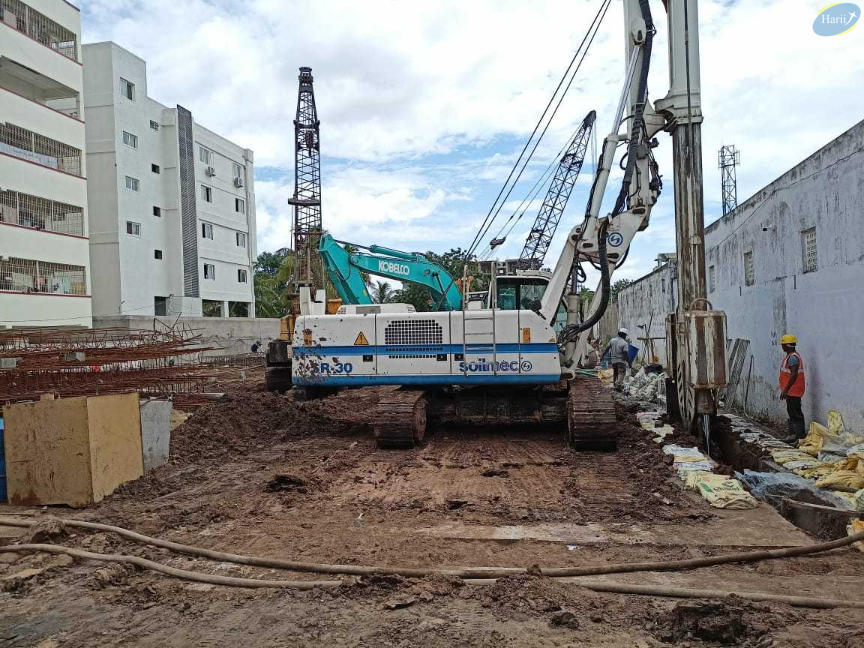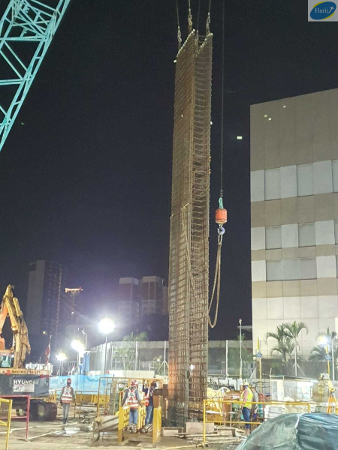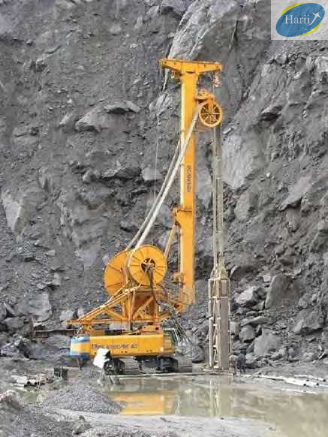Diaphragm Wall
What is D Wall?
- A diaphragm wall is a structural concrete wall constructed in a deep trench excavation, either cast in situ or using precast concrete components
- Diaphragms walls are often used on congested sites, close to existing structures, where there is restricted headroom, or where the excavation is of a depth that would otherwise require the removal of much greater volumes of soil to provide stable battered slopes.
- Diaphragm walls are suitable for most subsoil and their installation generates only a small amount of vibration and noise, which increases their suitability for works carried out close to existing structures. In addition, floor slab connections and recessed formwork can be incorporated into the walls.
How to build a D WALL? Diaphragm walls are one of the most important technologies of special foundation engineering. A diaphragm wall is constructed using a trench excavated in ground and supported by a mud fluids (typically bentonite or polymer mud) until the mud is replaced by concrete, after the steel cage installation.

D-Wall Work at Medstar Hospital, Vijayawada
- D-Wall Work at Medstar Hospital, Vijayawada
- 600mm width
- depth of 16m
After grabbing
Reinforcement fixing work in progress


D-Wall Work at Metro Project
- D-Wall Work
- D-Wall
- Metro Project
D wall Cutter Work
Cutter Work

What are DWALL used for?(Applications/Usages) Diaphragm walls are mainly used for Construction of
- Underground Metro Railway Station
- Retaining walls,
- Heavy Foundations
- Combined Retaining Wall and Foundation,
- Combined Retaining Wall and Barrage,
- Construction of Deep Basements top-down method after wall execution
Diaphragm Wall's (DWall) Advantages Diaphragm walls are mainly used for Construction of
- Can be used as permanent structural wall
- Water retainable
- Can be installed to deeper depths and for load bearing element
- Less temporary propping needed
- Can be applied for top-down construction method
- Rigid structure so that ground movement induced by basement excavation is less than other flexible retaining wall
- Vibration and noise generated from installation of diaphragm wall is less than other methods